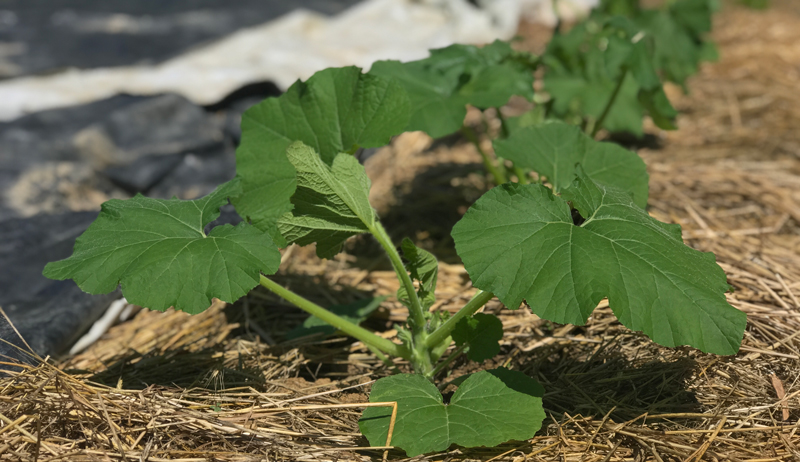
“Don’t leave your car doors unlocked in the summertime or you’ll return to a backseat full of zucchini,” is a familiar dad joke in rural towns.
Surrounded by farming friends, though, this statement is serious. That’s why I chose to grow patty pan squash this year, instead of traditional zucchini.
Other names for patty pan squash are scallopini, sunburst and button squash.
These flying-saucer-shaped squash are so similar to their zucchini and summer squash cousins that I use them interchangeably in cooking. And the plants look alike in the garden.
It’s just nice to grow something a bit different.
These tips will keep your garden productive and healthy all season long!
Varieties
You’ll find patty pan squash in a range of colors, from pale green to white to bright yellow. You can also choose:
- Heirlooms or hybrids selected for disease and pest resistance
- Open plants (those without thick foliage that are easier to harvest from)
- Quick-maturing varieties
At the end of last season, I found Bennings Green Tint patty pan seeds on sale, so that’s what I planted this year. In the future, I’d like to try these alongside G-Star, Yellow Bush and Early White Bush for a rainbow of colors.

How to Grow Patty Pan Squash
If the state fair had a contest for the largest summer squash plant, the competition wouldn’t even have to show up. We may or may not have over-supplemented the nitrogen in that area of the garden, resulting in the largest squash plant I’ve ever seen.
While patty pan squash might not need as much nutrition as they have in my garden right now, they do need soil that’s well drained and well balanced with nutrients.
Give the plants a boost with a side-dressing of compost when the first blooms appear. This will get them through fruiting.
Most varieties of patty pan squash are bush instead of vining. Plant them into mounds or raised beds. Give the vining plants a trellis, or allow them to wander along the raised bed to shade out the weeds.
When planting, cucurbits don’t prefer to have their roots messed with. You can start patty pans indoors and transplant after last frost.
You will, however, likely harvest just as soon by waiting until the soil warms to 60 degrees F or higher and direct-seeding into the garden. I did both this year.
I also have been reading about starting summer squash in biodegradable pots to give them a head-start indoors. Then you can just transplant them without disturbing their roots.
Cover your patty pan seedlings with floating row cover to keep away the cucumber beetles. Uncover the plants when they start to flower so the pollinators can find them.
The plants should be large enough to fend off their own pests at this point.
If the plants stay healthy, they’ll produce for weeks throughout the summer. If you’re really into patty pans, succession plant about every four weeks.
Keep an eye on the days to maturity versus your average first frost, and give your plants a buffer of a few weeks at the end of the season. For example, if you have a patty pan with 50 days to maturity and your first frost is October 15, seed your last crop by August 1.
Check out these 10 quick-growing vegetables that produce an early harvest!
How to Harvest
Patty pan squash can be harvested at any point in their growth, from baby to big. Baby squash are more tender.
The stems are thick and not always easy to snap without damaging the plant, so I use a harvest knife to slice the fruit from the plant with just 1/4 inch of stem attached.
Store patty pan squash in the fridge after harvesting.
Patty Pan Squash Recipes
Being a summer squash relative, patty pans can be used interchangeably.
I love patty pans grilled, which is how I love most vegetables. They actually are the perfect size and shape to top or sub for a hamburger—a definite advantage over “normal”-shaped summer squash. Slice the patty pan into patties, brush with olive oil, sprinkle a little salt, and grill until delicious, caramelized grill marks appear.
A few patty pan (zucchini) recipe favorites worth calling out from Hobby Farms are herbed cheese bread, mystery cobbler—which tastes just like delicious apple cobbler and is fun to bring to gatherings, orzo salad with tomatoes, and squash and corn pancakes.
When the annual itch to grow zucchini arrives, think about whether you need to grow the same thing every gardener around you is growing or if it’s time to give a relative a shot.
Patty pan squashes are waiting.




